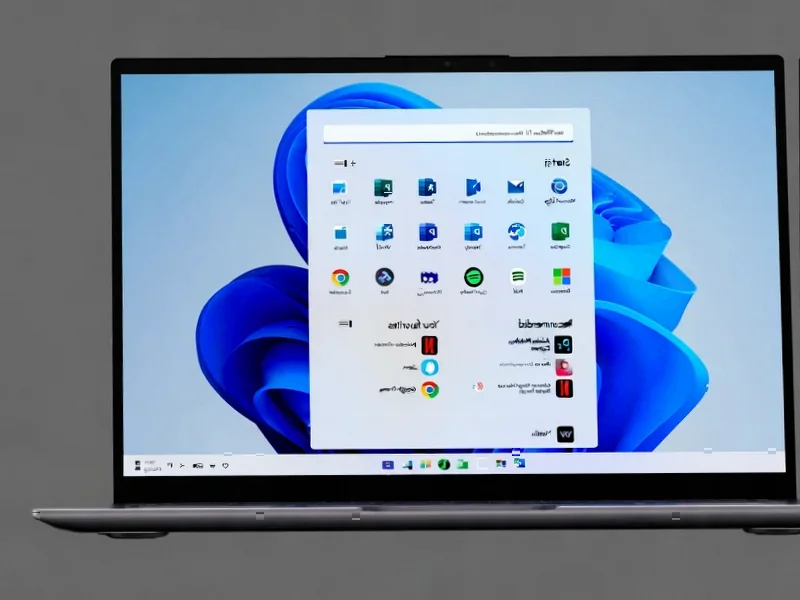According to Windows Report | Error-free Tech Life, Microsoft’s October 2025 preview update KB5067036 is causing significant system issues where the Task Manager refuses to quit even after users click the Close button. Multiple taskmgr.exe processes remain active in the background and accumulate over time, creating noticeable system lag, stutters, and CPU spikes particularly problematic for PCs with limited memory. Microsoft has officially acknowledged the issue on its Windows Release Health dashboard and provided a workaround requiring users to manually terminate all background instances. The problematic update also introduced a redesigned Start menu and expanded Administrator Protection features, creating a situation where new features come with significant performance tradeoffs. This latest bug raises serious questions about Microsoft’s quality assurance process for Windows updates.
The Systemic Quality Control Problem
What’s most concerning about this Task Manager bug isn’t the specific technical issue itself, but what it reveals about Microsoft’s broader quality control challenges. This isn’t an isolated incident – we’ve seen a pattern of problematic Windows updates throughout 2024, from file explorer crashes to taskbar malfunctions. The fact that this reached users as an “optional” preview update suggests Microsoft’s internal testing either missed this obvious issue or deliberately released it knowing the consequences. When a core system utility like Task Manager – the very tool users rely on to manage problematic processes – becomes part of the problem, it indicates fundamental breakdowns in Microsoft’s development and testing pipelines.
The Hidden Resource Drain Implications
While Microsoft describes the issue as creating “noticeable lag,” the reality is potentially more severe than the company acknowledges. Each lingering Task Manager process consumes system resources – memory, CPU cycles, and handle counts that accumulate silently. For users with 8GB or less RAM, which still represents a significant portion of the Windows installed base, dozens of these zombie processes could push systems into heavy memory pressure, triggering aggressive paging and further performance degradation. The accumulation effect over time means the problem grows worse the longer a system runs without reboot, creating a stealth performance drain that most users won’t immediately attribute to the Task Manager itself.
Unaddressed Security and Stability Concerns
Beyond performance issues, this bug creates subtle security and stability risks that Microsoft hasn’t adequately addressed. Multiple running instances of system utilities can create unexpected interactions with security software, potentially bypassing monitoring or creating false positives. More critically, the manual workaround Microsoft suggests – forcing users to manually terminate processes – represents a security anti-pattern. Training users to routinely kill system processes normalizes behavior that could be exploited by malware or lead to accidental termination of critical system components. The psychological impact is also significant: when users can’t trust basic system utilities to behave predictably, it erodes confidence in the entire platform.
Broader Windows Update Strategy Flaws
This incident highlights the fundamental tension in Microsoft’s current Windows development model. The company is pushing aggressive feature updates while maintaining backward compatibility across an enormous hardware and software ecosystem. The optional preview channel, intended to catch issues before broad deployment, clearly isn’t functioning as intended when such obvious bugs reach users. Microsoft’s approach of bundling new features with system updates creates situations where users must choose between security patches and system stability – an unacceptable tradeoff for a mature operating system. The pattern suggests Microsoft needs to reconsider its entire update validation process, potentially implementing more rigorous automated testing and smaller, more focused update packages.
Industry Context and Microsoft’s Position
Compared to competitors like Apple’s macOS or various Linux distributions, Microsoft faces unique challenges with Windows’ massive install base and hardware diversity. However, that doesn’t excuse basic functionality regressions in core system utilities. What’s particularly troubling is that this bug affects the Task Manager – a tool users specifically launch when they’re troubleshooting performance issues. The irony of the performance monitoring tool itself becoming a performance problem underscores how deeply these quality issues penetrate the user experience. As Microsoft continues its transition to Windows as a service, these recurring quality problems threaten to undermine user trust and enterprise adoption of new Windows versions.




